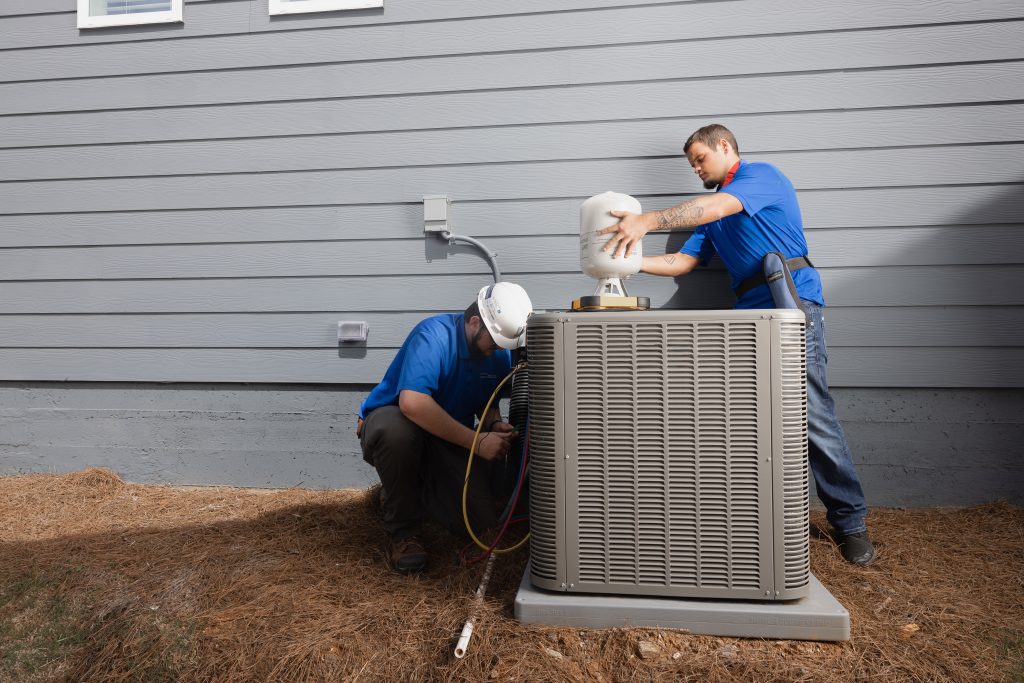Standard System Replacements

Superior
Indoor Comfort, Inc. strives to over-deliver on what we feel are the fundamentals of a great business community, honesty, professionalism and customer service. That’s why we’ve spent
years building our reputation on just that and we feel it provides our customers a Superior experience!

Signs You Need to Replace Your HVAC System
While regular maintenance can extend the life of your HVAC system, there comes a time when replacement is the best option. Here are signs that it may be time to consider a new system:
- Age: HVAC systems typically have a lifespan of 15-20 years. If your system is approaching this range and experiencing recurring issues, it might be more cost-effective to consider replacing it.
- Rising Energy Bills: A consistent increase in your energy bills despite regular maintenance could indicate that your system is not operating efficiently.
- Frequent Repairs: If you need repairs multiple times a year, investing in a new and reliable HVAC system will be more cost-effective.
- Inconsistent Comfort: If your current system struggles to maintain consistent temperatures or certain rooms in your home feel uncomfortable, upgrading to a new system with improved zoning capabilities could address these issues.
- Noisy Operation: If your HVAC system is producing loud and clunky noises, it could be a sign that it is nearing the end of its service life.
Our experienced team can assess the condition of your system and provide expert guidance on whether it’s time for an upgrade. We will assist you in selecting a new system that meets your needs and budget.

A Guide to Replacing an HVAC System
Your HVAC (Heating, Ventilation, and Air Conditioning) system is a vital component of your home, ensuring comfort year-round. However, like all appliances, it has a finite lifespan. Here are some signs that it might be time to replace your heating and cooling system:
Age of the System: On average, HVAC systems last around 15–20 years. If your system is nearing or surpassing this age, it’s time to consider a replacement. Newer models are more energy-efficient and reliable.
Frequent Repairs: If you call the HVAC technician repeatedly for repairs, investing in a new system could be more cost-effective. Frequent breakdowns are a sign of declining system health.
Rising Energy Bills: An inefficient HVAC system can significantly increase energy bills. If you notice a steady rise in your monthly expenses despite regular maintenance, your system might be the culprit.
Uneven Heating or Cooling: Inconsistent temperatures in different rooms or areas of your home indicate that your HVAC system isn’t distributing air evenly. This may be due to worn-out components.
Loud Noises: Unusual noises such as banging, rattling, or squealing from your HVAC system can indicate serious problems. You may contact a reliable HVAC contractor to assess whether the loud noises can be fixed or if it’s time to opt for a replacement for your heating and cooling system.
Standard Procedure for HVAC System Replacement
When it’s clear that your HVAC system needs replacement, follow these steps for a smooth transition:
STEP 1.Assessment:
Call us to assess your current system. We will evaluate its condition, size, and your home’s specific needs to determine the appropriate replacement system.
STEP 2. Choosing the Right System:
Work with our technician to select your home’s HVAC system. Consider factors like energy efficiency, size, and features. Modern systems are often more energy-efficient and use advanced technology to enhance comfort and control.
STEP 3. Financial Planning:
We accept multiple forms of payment including cash, check and major credit cards. Financing available with flexible terms.
STEP 4. Installation:
Once you’ve chosen a system, we will schedule the installation at your convenience.
STEP 5. Energy Efficiency:
New HVAC systems are designed to be more energy-efficient, which can result in lower utility bills. Take advantage of any available rebates or incentives for energy-efficient upgrades.
STEP 6. Regular Maintenance:
After installation, don’t forget to schedule regular maintenance to keep your new HVAC system in optimal condition. This will prolong its lifespan and ensure efficient performance
HVAC System Replacement Cost
The cost of replacing an HVAC system varies based on several factors, including the size of your home, the type of system you choose, and your location. The average cost can range from $5,000 to $10,000 or more. Here’s a breakdown of potential expenses:
Equipment Cost: This is the cost of the replacement HVAC system itself, which can range from $1,000 to $10,000 or more, depending on the type and efficiency level.
Installation Costs: Installation can account for a significant portion of the total cost and varies from contractor to contractor.
Ductwork: If your ductwork needs repairs or modifications to accommodate the new system, this can add to the overall cost. Ductwork costs can range from $500 to $2,000 or more.
Additional Components: You might need to purchase additional components like a thermostat, air purifier, or humidifier, which can add a few hundred to a couple of thousand dollars.
Modernizing Heating and Cooling Systems for a More Comfortable and Efficient Home
Comfort related technologies aimed at modernizing heating and cooling systems have emerged to improve living conditions while providing long-term financial and environmental benefits. Here are some options for these renovations and their many advantages.
- Ductless Mini-Split Systems
Unlike traditional central heating and cooling systems that rely on ductwork, mini-splits operate without ducts. Instead, they consist of an outdoor compressor unit connected to indoor air-handling units placed throughout the home.
Benefits:
Zoned Heating and Cooling: Mini-splits allow for individualized room temperature control, promoting comfort and energy savings.
Energy Efficiency: They are highly efficient and can be up to 30% more efficient than traditional systems because there is no energy loss through ductwork.
Easy Installation: The absence of ductwork makes installation easier and less invasive.
- Smart Thermostats
The advent of smart thermostats has revolutionized how we control our HVAC systems. These devices connect to your home’s Wi-Fi network, enabling remote control through smartphone apps and voice commands.
Benefits:
Energy Savings: Smart thermostats optimize heating and cooling schedules based on your habits, lowering energy bills.
Convenience: You can adjust your home’s temperature from anywhere, ensuring comfort when you walk in the door.
Learning Capabilities: Some models learn your preferences and adjust settings accordingly, maximizing comfort and efficiency.
3. High-Efficiency Heat Pumps
Modern heat pumps have evolved to be incredibly efficient and capable of heating and cooling your home. They operate by transferring heat between the indoor and outdoor units.
Benefits:
Year-Round Comfort: Heat pumps provide efficient heating in the winter and cooling in the summer, eliminating the need for separate systems.
Energy Savings: They can save money on energy bills, especially in regions with moderate climates.
Environmental Friendliness: Heat pumps use electricity to move heat rather than generate it, making them environmentally friendly.
FAQs
Replacement for home or office HVAC systems typically includes removing and disposing of the old heating and cooling equipment, installing new HVAC units or components, potential modifications to ductwork or infrastructure, and system testing to ensure proper functionality.
Whether to repair or replace your HVAC system depends on its age, the frequency and cost of repairs, and its energy efficiency.
If your system is old, requires frequent and expensive repairs, and is not energy-efficient, replacing it with a newer, more efficient model is often more cost-effective. Our HVAC technicians can provide guidance based on a thorough assessment of your system.
The best time to replace your HVAC system is typically during the off-seasons of spring or fall when you’re not heavily reliant on heating or cooling. This allows you to take your time researching options, and scheduling the replacement at your convenience.
Request Your Appointment


